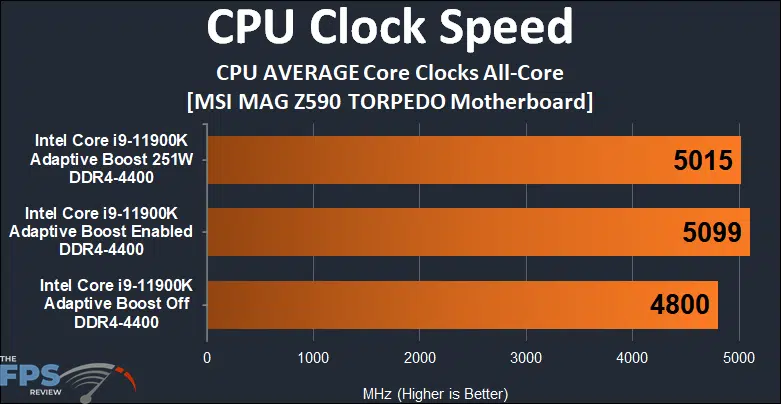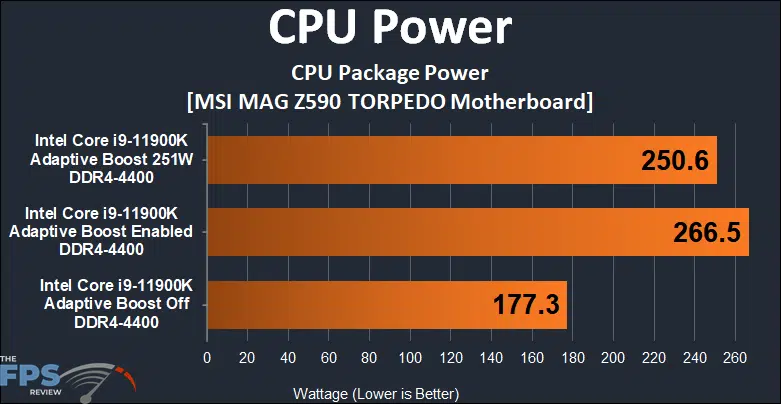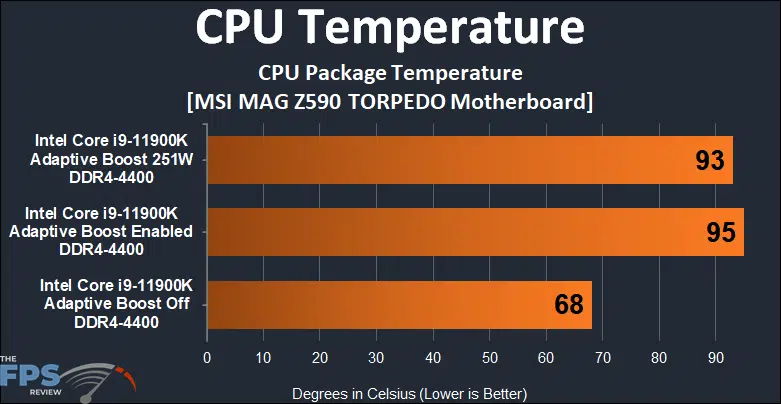CPU Frequency and Power and Temp
Now we are going to see how the CPU frequency pans out, temperature, and power in the three CPU modes provided by this motherboard using the Intel Core i9-11900K.

This graph above shows why we are getting the boosts we are getting with Adaptive Boost enabled versus default CPU performance on this motherboard. Above we are looking at the average CPU core clocks in all-core rendering of Cinebench. The all-core CPU frequency at default is 4800MHz (4.8GHz) and when we enable Adaptive Boost 251W this goes up to 5015MHz (5.015GHz) just by enabling that higher power setting. Then, we get a little more frequency with Adaptive Boost Enabled making it average 5099MHz 5.1GHz on all cores! BTW, this was sustained for 10 minutes, a 10-minute run of Cinebench and this is the average clock speed reported by HWiNFO64.

In the above graph, you can see what’s happening with the power at these different modes. By default, the “maximum” reported CPU package power hits 177.3W PL1 before TAU expires. However, enabling the Adaptive Boost 251W does exactly what it says on the tin, we hit nearly 251W now, raising the power quite a bit and giving us that higher frequency. However, it can go even higher, with Adaptive Boost Enabled with no power limits we hit a total power of 266.5W! That was completely stable on this motherboard, its VRMs held up and provided this much power to the CPU without any issue and gave us 5.1GHz frequency all-core.

The biggest result of increasing power is increasing temperature. Now, we are using a 360mm AIO, but even with this AIO at maximum fan speeds, this CPU gets hot with Adaptive Boost enabled. By default, we start at a very reasonable 68c maximum temperature in a 10-minute run of Cinebench. However, turning on Adaptive Boost 251W increases that to a very high 93c, and then that is further pushed up to 95c at Adaptive Boost enabled. We are literally maxing out the capability of the 360mm radiator at these power levels. That remember, is a key for ADaptive Boost enabling higher performance, and we can do that, but we are right on the edge. This motherboard though, it takes it all in kind.
